- Home
- James Rollins
The Judas Strain Page 3
The Judas Strain Read online
Page 3
Page 3
All three of them joined the dog and looked below.
The glowing edge of the milky sea lapped at the yacht's keel. From the depths below, a large shape rolled into view, belly up, but still squirming, teeth gnashing. It was a massive tiger shark, over six meters. The glowing waters frothed over its form, bubbling and turning the milky water into red wine.
Susan realized it wasn't water that was bubbling over the shark's belly, but its own flesh, boiling off in wide patches. The horrible sight sank away. But across the milky seas, other shapes rolled to the surface, thrashing or already dead: porpoises, sea turtles, fish by the hundreds.
Applegate took a step away from the rail. "It seems these bacteria have found more than just algae to feed on. "
Gregg turned to stare at her. "Susan . . . "
She could not look away from the deadly vista. Despite the horror, she could not deny a twinge of scientific curiosity.
"Susan . . . "
She finally turned to him, slightly irritated.
"You were diving," he explained, and pointed. "In that water. All day. "
"So? We were all in the water at least some time. Even Oscar did some dog-paddling. "
Her husband would not meet her gaze. He remained focused on where she was scratching her forearm. The wet suit sometimes chafed her limbs. But the worry in his tight face drew her attention to her forearm. Her skin was pebbled in a severe rash, made worse by her scratching.
As she stared, bruising red welts bloomed on her skin.
"Susan . . . "
She gaped in disbelief. "Dear God . . . "
But she also knew the horrible truth. its. . . it's in me.
12 Dark Madonna
July 1, 10:34 a. m. Venice, Italy
He was being hunted.
Stefano Gallo hurried across the open plaza square. The morning sun already baked the stones of the piazza, and the usual throng of tourists sought shady spots or crowded the gelato shop that lay within the shadow of St. Mark's Basilica. But this most lofty of all of Venice's landmarks, with its towering Byzantine facade, massive bronze horses, and domed cupolas, was not his goal.
Not even such a blessed sanctuary could offer him protection.
There was only one hope.
His steps became more rushed as he passed by the basilica. The piazza's pigeons scattered from his path as he stumbled through them, heedless of their flapping flight. He was beyond stealth. He had already been discovered. He had spotted the young Egyptian with the black eyes and trimmed beard as he'd entered the far side of the square. Their gazes had locked. The man was now dressed in a dark suit that flowed like oil from his wide, sharp shoulders. The first time the man had approached Stefano he had claimed to be an archaeology student out of Budapest, representing an old friend and colleague from the University of Athens.
The Egyptian had come to the Museo Archeologico searching for a specific bit of antiquity. A minor treasure. An obelisk from his country. The Egyptian, financed by his government, wished it returned to his homeland. He had come with a sizable payment, bonded cashier notes. Stefano, one of the museum's curators, was not above accepting such a bribe; his wife's escalating medical bills threatened to evict them from their small apartment. To collect such secret payment was not untoward; for the past two decades the Egyptian government had been buying back national treasures out of private collections and pressuring museums to return what rightfully belonged in Egypt.
So Stefano had agreed, promising at first to deliver it up. What was one small nondescript stone obelisk? The object had remained crated for almost a full century according to the manifest. And its terse description probably explained why: Unmarked marble obelisk, excavated in Tanis, dated to the late dynastic period (26th Dynasty, 615 B. C). There was nothing unusual or particularly intriguing, unless one looked closer, followed its trail of provenance. It had come out of a collection that graced one of the Musei Vaticani in Rome: the Gregorian Egyptian Museum.
How it ended up in the vaults here in Venice was unknown.
Then yesterday morning, Stefano had received a newspaper clipping, sent by private courier in an envelope with a single symbol stamped into a wax seal.
The Greek letter sigma.
He still did not understand the significance of the seal, but he did understand the import of the enclosed clipping. A single article, dated three days prior, reported news of a man's body found on an Aegean beach, his throat slashed, his body bloated and nested with feasting eels. An especially fierce storm surge had returned the body from its watery grave. Dental records identified the body as that of his university colleague, the one who had reportedly sent the Egyptian.
The man had been dead for weeks.
Shock had caused Stefano to act rashly. He clutched the heavy object to his bosom, wrapped in sackcloth and still prickling with packing hay.
Stefano had stolen the obelisk from the vault, knowing the act would put him, his wife, his whole family, at risk.
He'd had no choice. Along with the dire article, the sealed envelope had contained a single message, unsigned, but plainly scrawled in a hurry, in a woman's hand, a warning. What the note contended seemed impossible, incredible, but he had tested the claim himself. It had proved true.
Tears threatened as he ran, a sob choked his throat.
No choice.
The obelisk must not fall into the hands of the Egyptian. Still, it was a burden he refused to shoulder any longer than necessary. His wife, his daughter . . . he pictured the blotted body of his colleague. Would the same befall his family?
Oh, Maria, what have I done?
There was only one who could take this burden from him. The one who had sent the envelope, a warning sealed with a Greek letter. At the end of her note, a place had been named, along with a time.
He was already late.
Somehow the Egyptian had discovered his theft, must have sensed Stefano was going to betray him. So he had come for it at dawn. Stefano had barely escaped his offices. He had fled on foot.
But not fast enough.
He checked over his shoulder. The Egyptian had vanished into the milling crowd of tourists.
Turning back around, Stefano stumbled through the shadow of the square's bell tower, the Campanile di San Marco. Once the brick tower had served as the city's watchtower, overlooking the nearby docks and guarding the port. Would that it could protect him now.
His goal lay across a small piazzetta. Ahead rose the Palazzo Ducal, the fourteenth-century palace of Venice's former dukes. Its two levels of Gothic arches beckoned, offering salvation in Istrian stone and rosy Veronese marble.
Clutching his prize, he stumbled across the street.
Was she still there? Would she take the burden?
He rushed toward the sheltering shadows, escaping the blaze of the sun and the glare off the neighboring sea. He needed to be lost in the maze of the palace. Besides housing the duke's personal residence, the Palazzo Ducal also served as a governmental office building, a courthouse, a council chamber, even an old prison. A newer prison rose across the canal behind the palace, connected by an arched bridge, the infamous Bridge of Sighs, over which Casanova had once made his escape, the only prisoner ever to break out of the palace's cells.
As Stefano ducked under the overhanging stretch of loggia, he prayed to the ghost of Casanova to protect his own flight. He even allowed himself a small breath of relief as he sank into the shadows. He knew the palace well. It was easy to get lost in its maze of corridors, a ready place for a clandestine rendezvous.
Or so he placed his faith.
He entered the palace through the western archway, flowing in with a few tourists. Ahead opened the palace's courtyard with its two ancient wells and the magnificent marble staircase, the Scala dei Giganti, the Giant's Stairs. Stefano skirted the courtyard, avoiding the sun now that he had escaped it. He pushed through a small
, private door and followed a series of administrative rooms. They ended at the old inquisitor's office, where many poor souls had suffered interrogations of the most pained and brutal sort. Not stopping, Stefano continued into the neighboring stone torture chamber.
A door slammed somewhere behind him, causing him to jump.
He clutched his prize even tighter.
The instructions had been specific.
Taking a narrow back stairway, he wended down into the palace's deepest dungeons, the Pozzi, or Wells. It was here the most notorious prisoners had been held.
It was also where he was to make his rendezvous.
Stefano pictured the Greek sigil.
What did it mean?
He entered the dank hall, broken by black stone cells, too low for a prisoner to stand erect. Here the imprisoned froze during winter or died of thirst during the long Venetian summers, many forgotten by all except the rats.
Stefano clicked on a small penlight.
This lowest level of the Pozzi appeared deserted. As he continued deeper, Stefano's steps echoed off the stone walls, sounding like someone following him. His chest squeezed with the fear. He slowed. Was he too late? He found himself holding his breath, suddenly wishing for the sunlight he had fled.
He stopped, a tremble quaking through him.
As if sensing his hesitation, a light flared, coming from the last cell.
"Who?" he asked. "Chi e la?"
A scrape of heel on stone, followed by a soft voice, in Italian, accented subtly.
"I sent you the note, Signore Gallo. "
A lithe figure stepped out into the corridor, a small flashlight in her hand. The glare made it hard to discern her features, even when she lowered her flashlight. She was dressed all in black leather, hugging tight to hips and breast. Her features were further obscured by a head scarf, wrapped in a bedouin style, obscuring her features fully, except her eyes that reflected a glint of her light. She moved with an unhurried grace that helped calm the thudding of his heart.
She appeared out of the shadows like some dark Madonna.
"You have the artifact?" she asked.
"I. . . I do," he stammered, and took a step toward her. He held out the obelisk, letting the sackcloth fall away. "I want nothing more to do with it. You said you could take it somewhere safe. "
"I can. " She motioned for him to set it down on the floor.
He crouched and rested the Egyptian stone spire on the floor, glad to be rid of it. The obelisk, carved of black marble, rose from a square base, ten centimeters per side, and tapered to a pyramidal point forty centimeters tall.

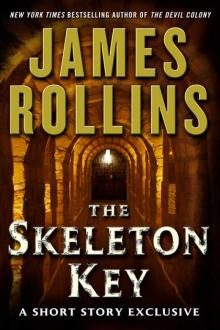 The Skeleton Key
The Skeleton Key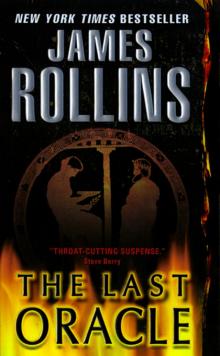 The Last Oracle
The Last Oracle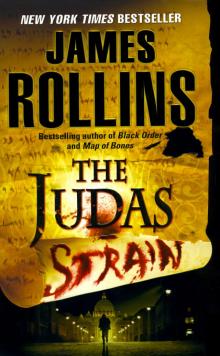 The Judas Strain
The Judas Strain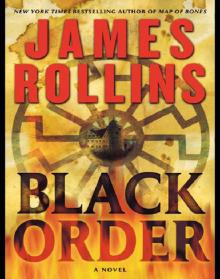 Black Order
Black Order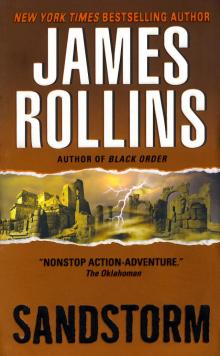 Sandstorm
Sandstorm Ghost Ship
Ghost Ship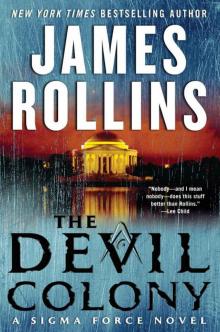 The Devil Colony
The Devil Colony Subterranean
Subterranean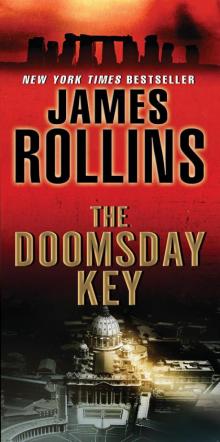 The Doomsday Key
The Doomsday Key The 6th Extinction
The 6th Extinction Bloodline
Bloodline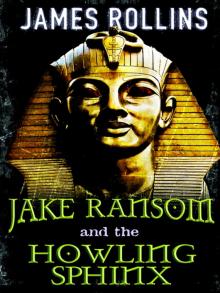 Jake Ransom and the Howling Sphinx
Jake Ransom and the Howling Sphinx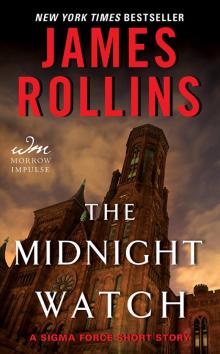 The Midnight Watch
The Midnight Watch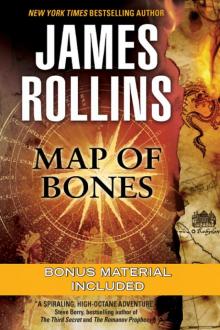 Map of Bones
Map of Bones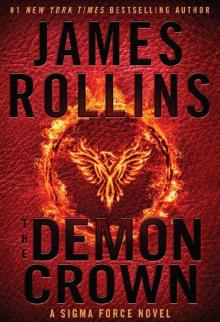 The Demon Crown
The Demon Crown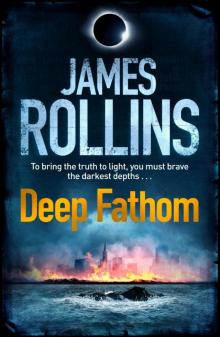 Deep Fathom
Deep Fathom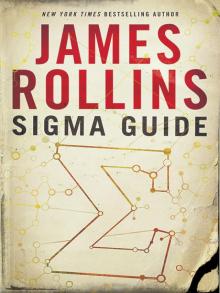 Sigma Guide
Sigma Guide Kowalski's in Love
Kowalski's in Love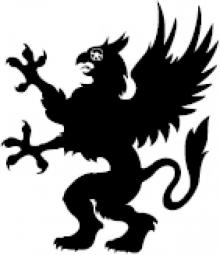 Jake Ransom and the Skull King's Shadow
Jake Ransom and the Skull King's Shadow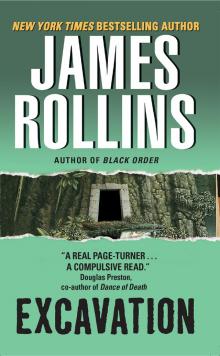 Excavation
Excavation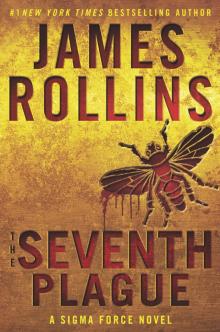 The Seventh Plague
The Seventh Plague Altar of Eden
Altar of Eden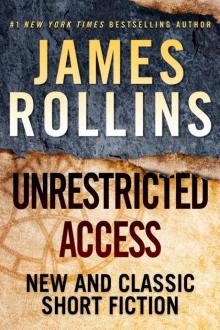 Unrestricted Access: New and Classic Short Fiction
Unrestricted Access: New and Classic Short Fiction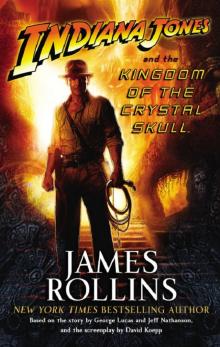 Indiana Jones and the Kingdom of the Crystal Skull
Indiana Jones and the Kingdom of the Crystal Skull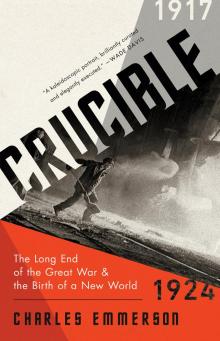 Crucible
Crucible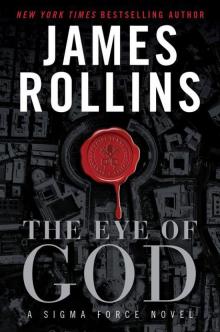 The Eye of God
The Eye of God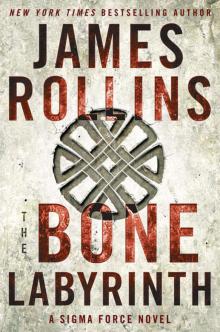 The Bone Labyrinth
The Bone Labyrinth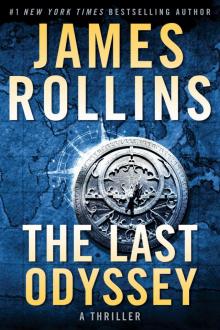 The Last Odyssey: A Thriller
The Last Odyssey: A Thriller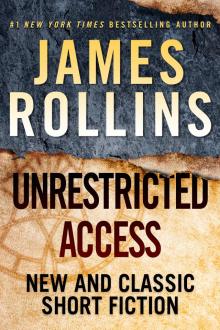 Unrestricted Access
Unrestricted Access Amazonia
Amazonia Blood Brothers: A Short Story Exclusive
Blood Brothers: A Short Story Exclusive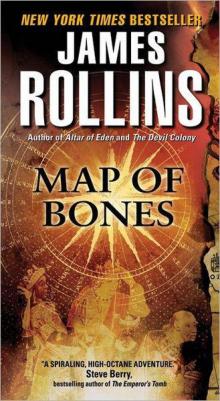 Map of Bones: A Sigma Force Novel
Map of Bones: A Sigma Force Novel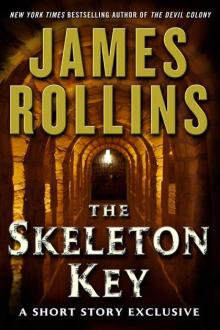 The Skeleton Key (sigma force)
The Skeleton Key (sigma force)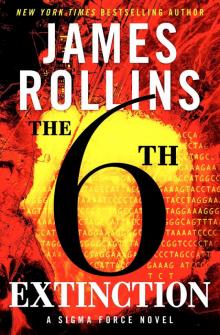 Sigma Force 10 - The Sixth Extinction
Sigma Force 10 - The Sixth Extinction Innocent Blood
Innocent Blood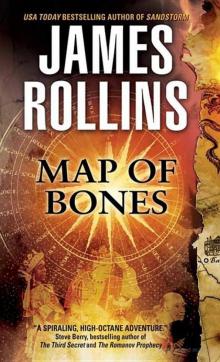 Map of Bones sf-2
Map of Bones sf-2 The Eye of God: A Sigma Force Novel
The Eye of God: A Sigma Force Novel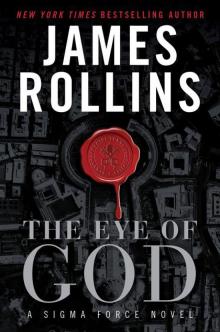 The Eye of God: A Sigma Force Novel sf-9
The Eye of God: A Sigma Force Novel sf-9 The Pit
The Pit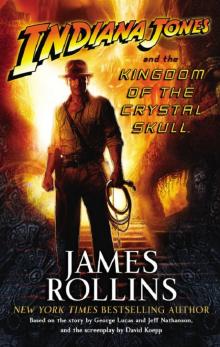 Indiana Jones and the The Kingdom Of The Crystal Skull
Indiana Jones and the The Kingdom Of The Crystal Skull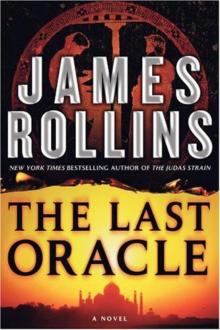 The Last Oracle (2008) sf-5
The Last Oracle (2008) sf-5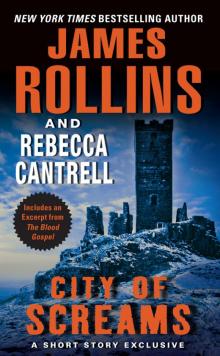 City of Screams
City of Screams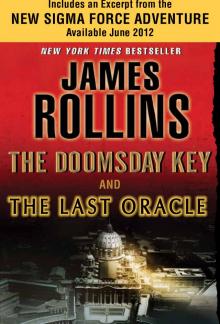 The Doomsday Key and The Last Oracle with Bonus Excerpts
The Doomsday Key and The Last Oracle with Bonus Excerpts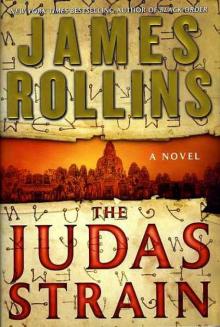 The Judas Strain sf-4
The Judas Strain sf-4 Blood Infernal
Blood Infernal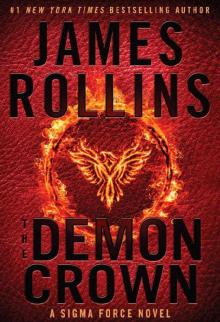 The Demon Crown: A Sigma Force Novel
The Demon Crown: A Sigma Force Novel War Hawk: A Tucker Wayne Novel
War Hawk: A Tucker Wayne Novel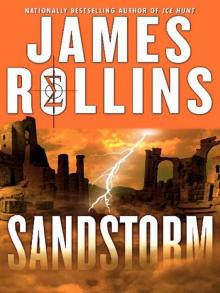 SANDSTORM sf-1
SANDSTORM sf-1 Bloodline: A Sigma Force Novel
Bloodline: A Sigma Force Novel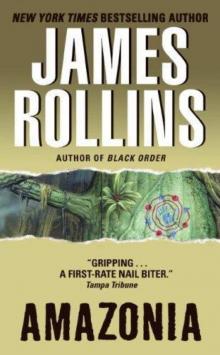 Amazonia: a novel
Amazonia: a novel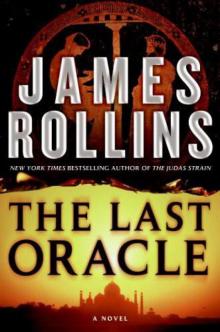 The Last Oracle: A Sigma Force Novel
The Last Oracle: A Sigma Force Novel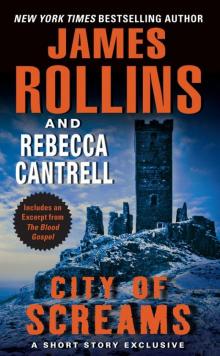 City of Screams (the order of the sanguines)
City of Screams (the order of the sanguines)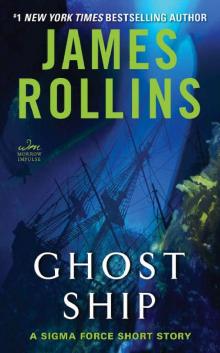 Ghost Ship: A Sigma Force Short Story
Ghost Ship: A Sigma Force Short Story The Doomsday Key: A Sigma Force Novel
The Doomsday Key: A Sigma Force Novel